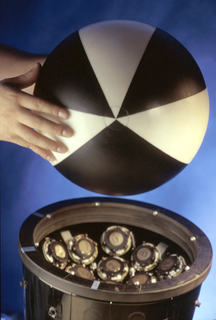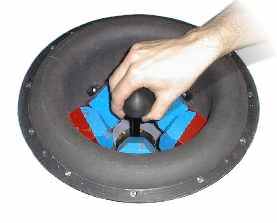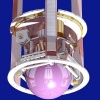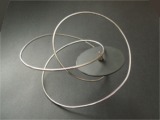First of all, welcome to the forum, LifeSpitter. Only Mikey_s has tried to show the problems here...

Let me try to argument against the necessity of slip ratios.
LifeSpitter wrote:Ciro, I think your reasoning is not correct. As you said, a conventional tire requires a slip angle in order to generate any lateral force. This lateral force is a function of the tire's cornering (sidewall) stiffness. One thing you failed to mention however was that in order for a tire to generate a longitudinal force, the tire itself must slip. The amount of longitudinal force a tire can deliver can be described in terms of a Slip Ratio. Essentially what I am getting at is that it is impossible for any tire, cylindrical or spherical, to deliver any sort of force, lateral or longitudinal, without slipping.
This is not true for a maglev wheel: with it, you have a "new way" to produce force, because you can displace the wheel laterally or longitudinally: the "flat spot" or contact patch does not have to be located under the axis of the weight forces of the car. If the wheel moves "backwards" it will generate longitudinal force without having to resort to a "differential spinning velocity" (slip ratio). It is the same thing with a bycicle: you can incline your weight to move laterally, if you follow my drift.
Spheres cannot turn around two axes at the same time. A sphere can only turn around one axis (which may happen to be the resultant axis of two other axes of rotation).
I was pointing to the fact that the rotation axis can be inclined with respect to horizontal and has two spin axes or
principal rotations, originating the displacement that allows to turn. Anyway, a sphere can precesse and can rotate around a point external to itself in an "arbitrary way".
Accelerating the vehicle from 0 to 2 kph laterally would require a slip ratio of the tire normal (perpendicular) to the current direction of the tire, aka a slip angle. Also, once this acceleration was acheived, the result would be another straight heading of the vehicle which would just be the resultant of the lateral and longitudinal velocities. In order to turn the vehicle, lateral velocity would need to be steadily increasing while longitudinal velocity decreased. This again would require slipping of the spherical tire. The dynamics of a spherical tire are essentially identical to that of a cylindrical tire.
The only difference is that parallel parking would be easy with a spherical tire. Hope this clears things up.
Look, this is the best I can do about why I think an spherical tire can develop lateral forces without sliping:

In essence, this wheel can develop its own sideslope. Or, if you wish, it can change its camber angle (and caster angle, for longitudinal forces). I fail to see why the wheel can be located at the opposite end of the force exerted on it by the vehicle, in such a way that is "normal" to it.
There is an essential difference between
holonomic vehicles and
non-holonomic vehicles I already pointed out.
I can understand the remark about parking, I spend a lot of time plotting vehicle trajectories: this is the reason I started to think about all that spherical wheels thing. The fundamental constraints to the trajectory are the same if you calculate them with the car moving at parking speeds or at road speeds. This is why I suggested watching the behaviour of the Audi in the chases depicted in "I Robot".
There are other implications, as the ability to "move your weight around", that is, spinning the vehicle in any direction you choose while moving "ahead".
As for Mikey_s argument about the smaller patch, I think the size of the patch depends on the pressure inside the tire, nothing else. Of course, at the same pressure an spherical wheel has a patch that is smaller than a cylindrical one, but all you have to do to reach the same patch size is decrease the pressure.
Anyway, thanks for the refutation, LifeSpitter. I believe now that even if you could move laterally, like a bycicle, some slipping has to occur, as you and Mikey_s state, but I am not totally sure, after devising these "counter-arguments". Could you try to explain again, specially in view of the ability of the maglev wheel of moving around its socket?














